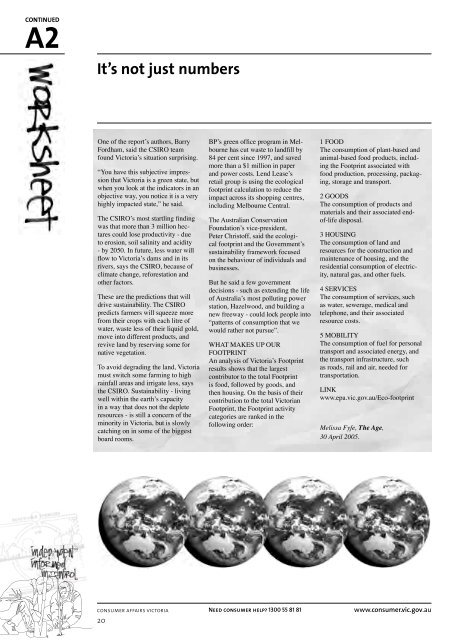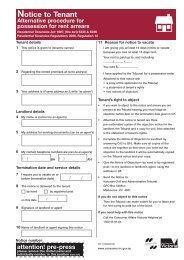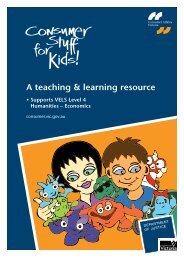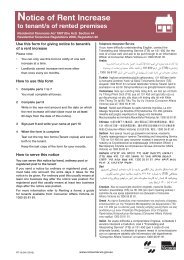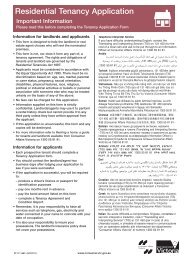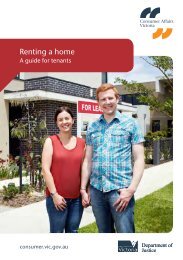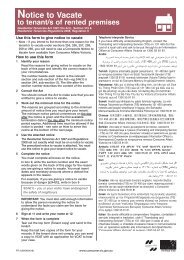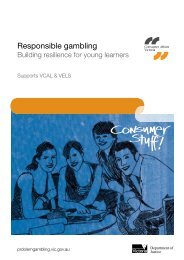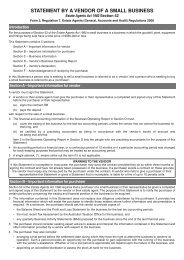A resource for teaching and learning about consuming planet earth
A resource for teaching and learning about consuming planet earth
A resource for teaching and learning about consuming planet earth
Create successful ePaper yourself
Turn your PDF publications into a flip-book with our unique Google optimized e-Paper software.
CONTINUED<br />
A2<br />
It’s not just numbers<br />
One of the report’s authors, Barry<br />
Fordham, said the CSIRO team<br />
found Victoria’s situation surprising.<br />
“You have this subjective impression<br />
that Victoria is a green state, but<br />
when you look at the indicators in an<br />
objective way, you notice it is a very<br />
highly impacted state,” he said.<br />
The CSIRO’s most startling finding<br />
was that more than 3 million hectares<br />
could lose productivity - due<br />
to erosion, soil salinity <strong>and</strong> acidity<br />
- by 2050. In future, less water will<br />
flow to Victoria’s dams <strong>and</strong> in its<br />
rivers, says the CSIRO, because of<br />
climate change, re<strong>for</strong>estation <strong>and</strong><br />
other factors.<br />
These are the predictions that will<br />
drive sustainability. The CSIRO<br />
predicts farmers will squeeze more<br />
from their crops with each litre of<br />
water, waste less of their liquid gold,<br />
move into different products, <strong>and</strong><br />
revive l<strong>and</strong> by reserving some <strong>for</strong><br />
native vegetation.<br />
To avoid degrading the l<strong>and</strong>, Victoria<br />
must switch some farming to high<br />
rainfall areas <strong>and</strong> irrigate less, says<br />
the CSIRO. Sustainability - living<br />
well within the <strong>earth</strong>’s capacity<br />
in a way that does not the deplete<br />
<strong>resource</strong>s - is still a concern of the<br />
minority in Victoria, but is slowly<br />
catching on in some of the biggest<br />
board rooms.<br />
consumer affairs victoria<br />
20<br />
BP’s green office program in Melbourne<br />
has cut waste to l<strong>and</strong>fill by<br />
84 per cent since 1997, <strong>and</strong> saved<br />
more than a $1 million in paper<br />
<strong>and</strong> power costs. Lend Lease’s<br />
retail group is using the ecological<br />
footprint calculation to reduce the<br />
impact across its shopping centres,<br />
including Melbourne Central.<br />
The Australian Conservation<br />
Foundation’s vice-president,<br />
Peter Christoff, said the ecological<br />
footprint <strong>and</strong> the Government’s<br />
sustainability framework focused<br />
on the behaviour of individuals <strong>and</strong><br />
businesses.<br />
But he said a few government<br />
decisions - such as extending the life<br />
of Australia’s most polluting power<br />
station, Hazelwood, <strong>and</strong> building a<br />
new freeway - could lock people into<br />
“patterns of consumption that we<br />
would rather not pursue”.<br />
WHAT MAKES UP OUR<br />
FOOTPRINT<br />
An analysis of Victoria’s Footprint<br />
results shows that the largest<br />
contributor to the total Footprint<br />
is food, followed by goods, <strong>and</strong><br />
then housing. On the basis of their<br />
contribution to the total Victorian<br />
Footprint, the Footprint activity<br />
categories are ranked in the<br />
following order:<br />
1 FOOD<br />
The consumption of plant-based <strong>and</strong><br />
animal-based food products, including<br />
the Footprint associated with<br />
food production, processing, packaging,<br />
storage <strong>and</strong> transport.<br />
2 GOODS<br />
The consumption of products <strong>and</strong><br />
materials <strong>and</strong> their associated endof-life<br />
disposal.<br />
3 HOUSING<br />
The consumption of l<strong>and</strong> <strong>and</strong><br />
<strong>resource</strong>s <strong>for</strong> the construction <strong>and</strong><br />
maintenance of housing, <strong>and</strong> the<br />
residential consumption of electricity,<br />
natural gas, <strong>and</strong> other fuels.<br />
4 SERVICES<br />
The consumption of services, such<br />
as water, sewerage, medical <strong>and</strong><br />
telephone, <strong>and</strong> their associated<br />
<strong>resource</strong> costs.<br />
5 MOBILITY<br />
The consumption of fuel <strong>for</strong> personal<br />
transport <strong>and</strong> associated energy, <strong>and</strong><br />
the transport infrastructure, such<br />
as roads, rail <strong>and</strong> air, needed <strong>for</strong><br />
transportation.<br />
LINK<br />
www.epa.vic.gov.au/Eco-footprint<br />
Melissa Fyfe, The Age,<br />
30 April 2005.<br />
Need consumer help? 1300 55 81 81 www.consumer.vic.gov.au


